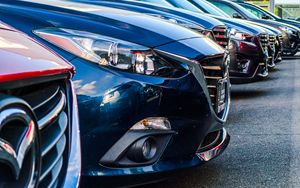(Finance) – In 2022 the load tax overall burden on motorization Italian stands at 71 billion Euros, slightly down compared to 2021 (-1.4%). In 2022, the reduction in the percentage share of revenue from the automotive sector out of the total national tax revenues – which goes from 14.4% to 12.9% – is due to the strong increase in the latter (+9.9%) compared to 2021 – both direct taxes (+10.9%) and indirect taxes (+ 8.6%), based on consumption. This is what emerges from the data published by Anfia, the association representing the Italian automotive supply chain.
“In 2022 the automotive sector will generate tax revenue of more than 70 billion euros – he commented Roberto Vavassori, President of ANFIA –. The negative change compared to 2021 (-1.4%) should not be read as a planned easing of the tax burden on the sector. It derives, however, from economic factors such as the reduction in excise duties introduced starting from March, to calm the surge in prices at the pump triggered by the energy crisis, and such as the contraction of the new and used car market. The percentage of tax revenue deriving from the sector on GDP stands at 3.6%, the highest among the major European countries, whose average is around 2.1%.
“Of the three tax moments of the contributory life cycle of motor vehicles, it is once again that relating tousage to weigh more heavily on the total tax revenues deriving from the sector, of which it represents 77.8%, exceeding 55 billion euros (-1.4% compared to 2021). Tax items such as those relating to fuel (31.94 billion euros) and VAT on maintenance and repairs, purchase of spare parts, accessories and tires (12.27 billion euros, an increase of 19.9%)”, explained Vavassori.
“In second place is the revenue deriving frompurchase (VAT and IPT payment), 12.1% of the total, for an amount of 8.56 billion euros, a decrease of 5.8% compared to 2021, thanks to the 9.7% drop in new car registrations – plus a reduction in the share of sales to private individuals from 61% to 56.7% – and 10.1% of used cars in the year 2022 – he added -. The revenue deriving from possessionfinally, it is worth 10.1% of the total, or 7.17 billion (+4.4% compared to 2021), equal to the total car tax payments. Looking to 2023, according to ANFIA estimates – which foresee the largest increases in the levy items relating to the purchase and use of the vehicle – it is possible that the tax burden on motorization will set a new record, reaching 77 billion euros (+ 8.5%)”.
(Photo: @pixel7propix on Unsplash)
